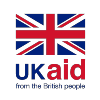To make progress towards reducing the worst forms of child labour by 2025, efforts need to focus on where those worst forms take place. Social protection is no different. However, despite the potential of interventions to tackle children’s harmful work, we have witnessed limited impact in this area.
There are two clear problems on why progress has been slow:
The first problem is conceptual
Within the world of social protection there is growing evidence on how interventions such as cash transfers impact child work. Yet very often studies reflect only sparsely on the role of work in children’s lives. Any type of engagement with work tends to be listed as child labour and something that social protection should aim to reduce.
Lack of clarity when using terms of child work and child labour combined with lack of nuance about harm and benefits of children’s engagement with work undermines the ability of social protection to adequately address harmful work. This is particularly true given the complex set of factors that feed into worst forms of child labour in areas such as in slum areas of Bangladesh. Poverty, social norms and lack of alternative opportunities leave children and families no other choice than be part of exploitative work. Much of this happens out of view from international companies and supply chains.
Indeed, based on the research emerging from CLARISSA, this is also the focus of our new campaign ‘The Small Business of Child Labour’. We are calling for a focus on the millions of working children caught in hidden, harmful and invisible spaces, often within thousands of small businesses mostly in the informal, unregulated sector.
The second problem is practical
The complexities surrounding children’s engagement in work, and especially harmful work, are likely to render traditional and top-down social protection interventions such as conditional cash transfers unsuccessful. For example, requiring children to stay away from work and go to school instead overlooks the reality that many children and their families derive important benefits from children’s work – not only in terms of income but also from a social and educational perspective.
A primary focus on changing the behaviour of children or families also ignores the fact that work takes place in small (often informal) business settings, where employment is often intertwined with housing arrangements and power dynamics at the community level.
Time to try a new approach
The CLARISSA social protection intervention is grounded in a bottom-up and relational approach, working with individuals, families and communities to achieve a better life and reduce the worst forms of child labour.
What exactly does this mean?
At the core of our intervention is a team of well-trained community mobilisers. They will collaborate with participants at individual, familial and group level to identify needs, mobilise resources towards attending to those needs, and to grow agency and capacity in the process. Activities include family-focused case work as well as facilitation of community-led collective action.
Three principles for intervention
- It is needs-centred.
This means that we acknowledge that every human has needs, that unmet needs cause suffering, and that meeting those needs is vital to achieving any ultimate objective.
- It is people-led.
Engagement will be built around and be led by the needs and desires expressed by the people we work with, which we anticipate leading to greater participation, appropriateness, ownership and effectiveness.
- It is open-ended and emergent.
Instead of pushing participants in any specific direction (towards, for example, ‘child issues’ like labour or schooling), the community mobilisers will remain entirely open as to which issues they focus on and with whom.
By adopting a relational approach as the foundation for our intervention, we make explicit that people’s lives are complex and that children’s engagement in harmful work follows many interlinking and overlapping factors. The ultimate aim is to reduce the worst forms of child labour, but – unlike other interventions – we refrain from being selective in who we work with or prescriptive on how we work.
Change happens in often unanticipated ways, with the most effective route not always the most obvious or direct. This is an uncomfortable truth for anyone designing or implementing interventions. Instead of moving against the current, we embrace this reality and work with where the participants take us. This is by no means simple, but an urgently needed shift in social protection if it is to truly improve their lives.
